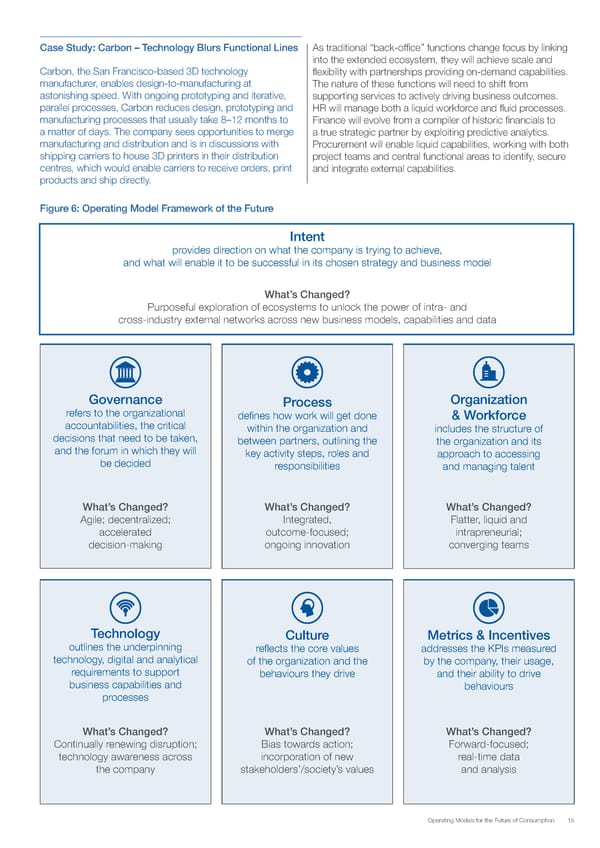Case Study: Carbon – Technology Blurs Functional Lines As traditional “back-office” functions change focus by linking into the extended ecosystem, they will achieve scale and Carbon, the San Francisco-based 3D technology flexibility with partnerships providing on-demand capabilities. manufacturer, enables design-to-manufacturing at The nature of these functions will need to shift from astonishing speed. With ongoing prototyping and iterative, supporting services to actively driving business outcomes. parallel processes, Carbon reduces design, prototyping and HR will manage both a liquid workforce and fluid processes. manufacturing processes that usually take 8–12 months to Finance will evolve from a compiler of historic financials to a matter of days. The company sees opportunities to merge a true strategic partner by exploiting predictive analytics. manufacturing and distribution and is in discussions with Procurement will enable liquid capabilities, working with both shipping carriers to house 3D printers in their distribution project teams and central functional areas to identify, secure centres, which would enable carriers to receive orders, print and integrate external capabilities. products and ship directly. Figure 6: Operating Model Framework of the Future Intent provides direction on what the company is trying to achieve, and what will enable it to be successful in its chosen strategy and business model What’s Changed? Purposeful exploration of ecosystems to unlock the power of intra- and cross-industry external networks across new business models, capabilities and data Governance Process Organization refers to the organizational defines how work will get done & Workforce accountabilities, the critical within the organization and includes the structure of decisions that need to be taken, between partners, outlining the the organization and its and the forum in which they will key activity steps, roles and approach to accessing be decided responsibilities and managing talent What’s Changed? What’s Changed? What’s Changed? Agile; decentralized; Integrated, Flatter, liquid and accelerated outcome-focused; intrapreneurial; decision-making ongoing innovation converging teams Technology Culture Metrics & Incentives outlines the underpinning reflects the core values addresses the KPIs measured technology, digital and analytical of the organization and the by the company, their usage, requirements to support behaviours they drive and their ability to drive business capabilities and behaviours processes What’s Changed? What’s Changed? What’s Changed? Continually renewing disruption; Bias towards action; Forward-focused; technology awareness across incorporation of new real-time data the company stakeholders’/society’s values and analysis Operating Models for the Future of Consumption 15
 Operating Models for the Future of Consumption Page 14 Page 16
Operating Models for the Future of Consumption Page 14 Page 16